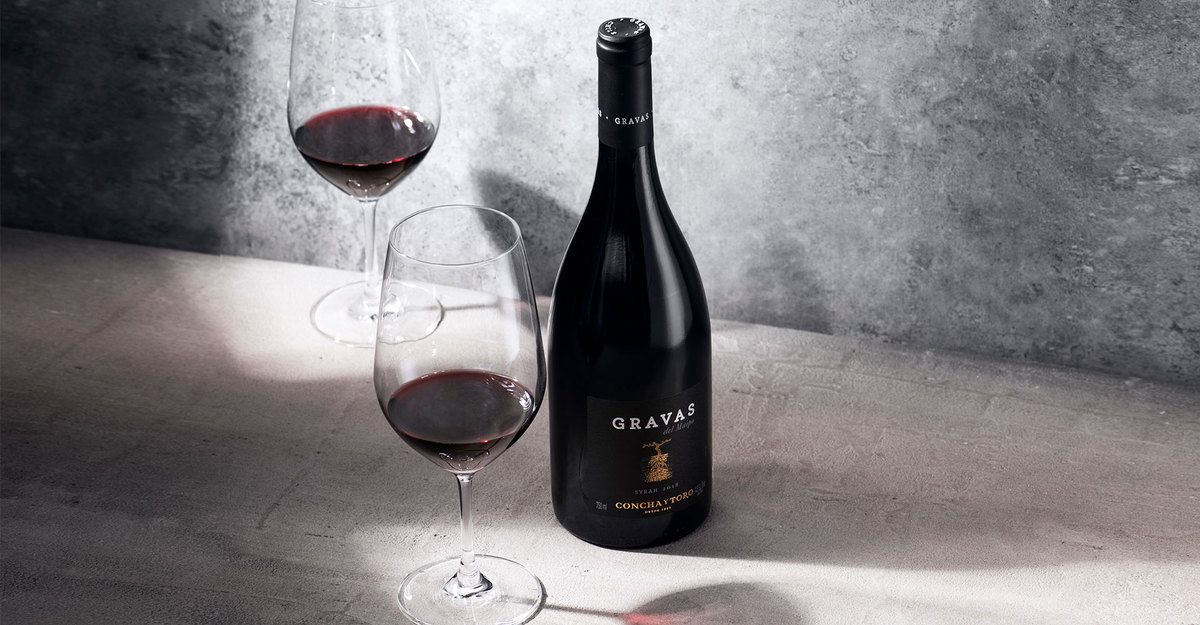16 de February de 2022
The character of Chilean Syrah
Although the history of Syrah is relatively new in Chile, since it was consolidated in the mid-1990s, the truth is that since then it has not stopped growing. The increase in plantations and the almost extreme diversification of this wine grape in different regions of Chile, show an interesting evolution. Why? Because the typicity of Syrah in the Chilean territory arises in a large number of styles, which makes it difficult to speak of a particular character.
According to history, Syrah did not arrive in Chile in the 19th century along with the other French vines that were brought from the Bordeaux area. But it was in 1984, when it appeared in the Aconcagua Valley thanks to a local winery. Almost 40 years have passed since then, and according to the latest registry of the Agricultural and Livestock Service (SAG), today in Chile there are 7,399 hectares of Syrah, making it the eighth most planted variety in the country. Where? From the coastal valleys of Casablanca and Leyda; the semi desert valleys of Limarí and Elqui; the warm valleys of Colchagua, Maipo and Maule, to the valleys of the central mountain range of Aconcagua, Cachapoal and Alto Maipo. As a result of this diversity of terroirs, Syrah has evolved into sub-regional styles, at the same time that winemakers have experimented with winemaking, also creating low intervention wines. The result is an extensive offer with enormous potential.
With firm grains and powerful aromas of black fruits, the Syrah grape delivers aromatic, deep wines with an intense flavour. In addition, its fairly marked tannins are synonymous with wines that age very well. They are elegant wines, and often stand out for their spiced and meaty notes.
Today, as we celebrate International Syrah Day, we tell you about the styles of this versatile wine variety in Chile.
-
Coastal Syrah
Although Casablanca was the first valley in which Syrah was planted beyond warm valleys such as Colchagua, today there are also bottles from Leyda and San Antonio Valley. These wines from cooler climates allow the grapes to ripen slowly, and stand out for their floral, meaty, black pepper and sometimes smoky notes, while on the palate they feel lighter, less alcoholic and very juicy. They are complex wines.
-
Semi-desert Syrah
From the Elqui and Limarí valleys, where the climate is dry and hot during the day, but with a cool coastal influence at night, another style of Syrah appears with elegant tannins, great minerality, and juicy acidity. They have aromas of very ripe black fruit, violets, meaty notes, sometimes with hints of old leather and graphite. They are also associated with the style of the Syrah from the north of the Rhône in southeastern France.
-
Syrah from central mountain range
In this area of Chile, where Bordeaux vines predominate, the wines stand out for the mixture of ripe black and red fruit, a distinctive animal note, a body that is lighter than powerful, present tannins and an ideal concentration for oak aging. As is the case of Gravas del Maipo Syrah 2018 and Marques de Casa Concha Syrah 2018, both with D.O Buin, from the Maipo Valley.
The first is dense, with great depth and a good network of tannins; the second, ripe, dense and with a delicate pitch note. Great wines.
-
Warm climate Syrah
In areas with a very hot and sunny climate, such as the Colchagua Valley or the Maule Valley, the Syrah is vigorous, with notes of ripe black fruit, sweet tannins and spicy notes. From the Villa Alegre area, in Maule, comes Cellar Edition Syrah 2019.

A blend of 90% Syrah and 10% Cabernet Sauvignon, which is intense on the nose, with a fruity character, notes of black fruit, berries and sweet spices. While on the palate it is subtle, structured and elegant. With great aging potential, this Syrah could easily be drunk until 2028.












